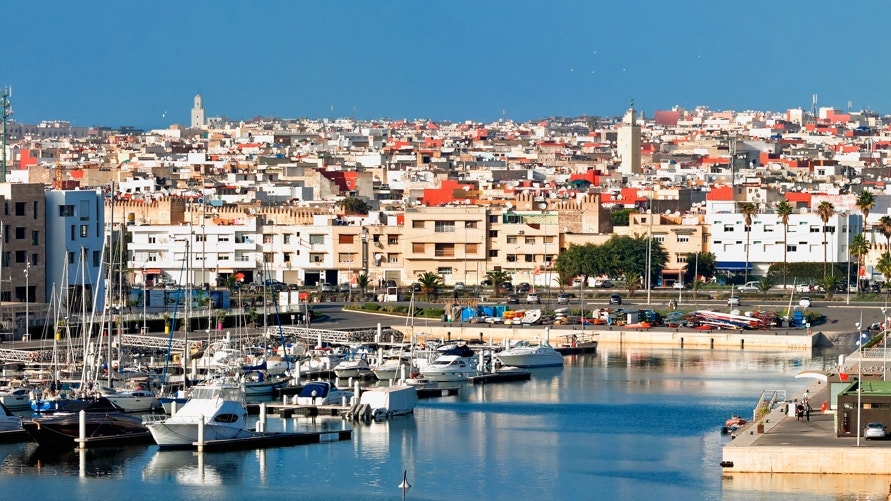Morocco, a North African country bordering the Atlantic Ocean and Mediterranean Sea, is distinguished by its Berber, Arabian and European cultural influences. Marrakesh’s medina, a mazelike medieval quarter, offers entertainment in its Djemaa el-Fna square and souks (marketplaces) selling ceramics, jewelry and metal lanterns. The capital Rabat’s Kasbah of the Udayas is a 12th-century royal fort overlooking the water.

License ID: 262811885 View of Rabat, Morocco
Member since: 2015
Capital
Rabat
Population (2015)
36,472,000
GNI Per Capita (2016)
$638.4
Emissions Per Capita (2014)
3.233 tons
Website Links
National Focal Points
National Climate Vulnerability Level and actions
Sea Level Rise
3 mm/yr
![]() 0.23%
0.23%
Sea Level Rise
3 mm/yr
![]() 0.23%
0.23%
Sea Level Rise
3 mm/yr
![]() 0.23%
0.23%
Adaptation: Priorities:
1) Protection of populations, through a risk-prevention management approach, particularly in the most vulnerable areas;
2) Protection of natural heritage, biodiversity, forestry and fishery resources, through an ecosystem-based adaptation approach;
3) Protection of climate-sensitive production systems, such as agriculture and tourism, as well as high-risk infrastructures;
4) Protection of the cultural heritage of the Kingdom through education and awareness actions, and efforts to preserve ancestral good practices in highly vulnerable sectors, such as water and agriculture.
Reduce GHG emissions by 32% (in relation to GHG emissions BAU levels (2010)) by 2030 conditional to external support in sectors of energy, industrial processes, agriculture, waste and LULUCF and to reduce GHG emissions by 13% from BAU levels by 2030 unconditionally.
Adaptation: Priorities:
1) Protection of populations, through a risk-prevention management approach, particularly in the most vulnerable areas;
2) Protection of natural heritage, biodiversity, forestry and fishery resources, through an ecosystem-based adaptation approach;
3) Protection of climate-sensitive production systems, such as agriculture and tourism, as well as high-risk infrastructures;
4) Protection of the cultural heritage of the Kingdom through education and awareness actions, and efforts to preserve ancestral good practices in highly vulnerable sectors, such as water and agriculture.


